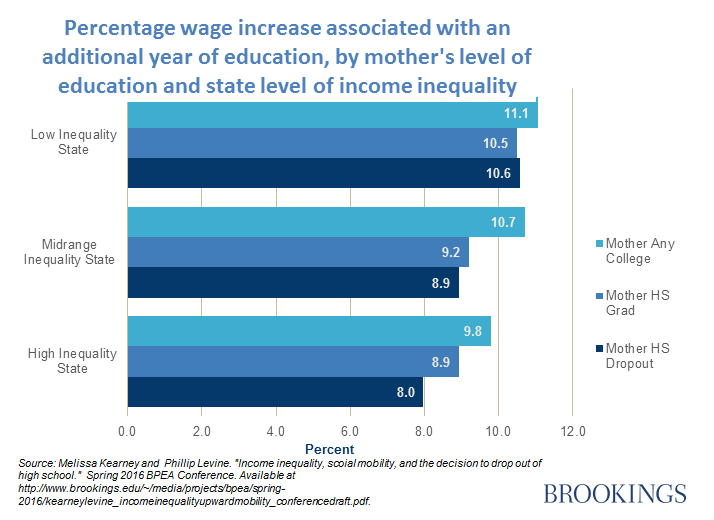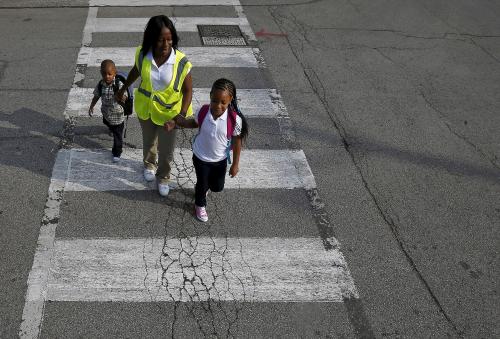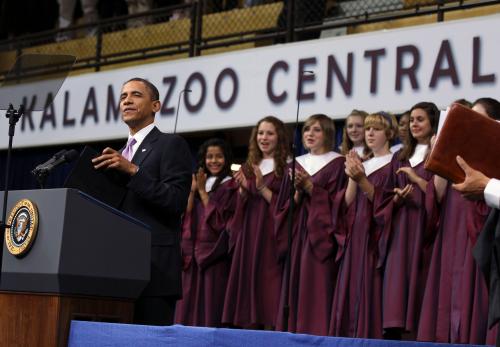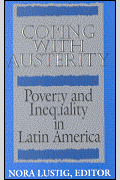High school dropout rates are higher in cities and states with greater income inequality. This does not just reflect the different demographics across places. As we document in our forthcoming contribution to the Brookings Papers on Economic Activity, children from lower socio-economic backgrounds are more likely to drop out if they live in a more unequal city or state. The question is: why? Perhaps children from lower socio-economic backgrounds perceive a lower return to staying enrolled in school. They might be correct.
Unequal places, unequal returns to schooling
Brad Hershbein’s recent blog (“A college degree is worth less if you are raised poor”) shows that gains to post-secondary education are lower for those from poorer backgrounds. Our own work points to an additional factor: inequality. Places with greater “lower-tail inequality” (the ratio of income at the 50th percentile of the income distribution to the 10th percentile) show the lowest wage gains to education for those from low-SES backgrounds.
Using data from the 1979 National Longitudinal Survey of Youth, we examine outcomes for children from three socio-economic categories, based on their mother’s level of education (no high school diploma, high school graduate, any college). Specifically, we measure the percentage wage increase associated with each additional year of school. We also compare results in states with low, high and medium levels of lower-tail income inequality. On average, an extra year of school is associated with a 10 percent higher wage. This is consistent with the broader research literature on the causal impact of education on earnings. But there is striking variation between states with different levels of income inequality:
In the more equal states, the wage gains associated with education vary only slightly by SES background. But there are big class gaps in the mid-range and high inequality states. In more unequal states, children from low-SES households see much lower rewards, in terms of wages, from each additional year of education. (An interactive map showing inequality rankings, along with dropout rates is available here.)
How might inequality impact returns to education?
This pattern has a number of possible explanations. Perhaps in more unequal states, schools attended by low-SES children are particularly weak, whereas in more equal states school quality is less varied. In unequal states, poor children might live in very isolated, segregated neighborhoods. Or perhaps there are simply fewer decently-paying jobs for high school graduates in less equal places, which low-SES young people struggle to secure. A better understanding of the complex relationships between inequality, dropout rates, and returns to education may help to address the broader challenge of reducing class gaps, and promoting upward mobility.












Commentary
Inequality undermines the value of education for the poor
March 16, 2016